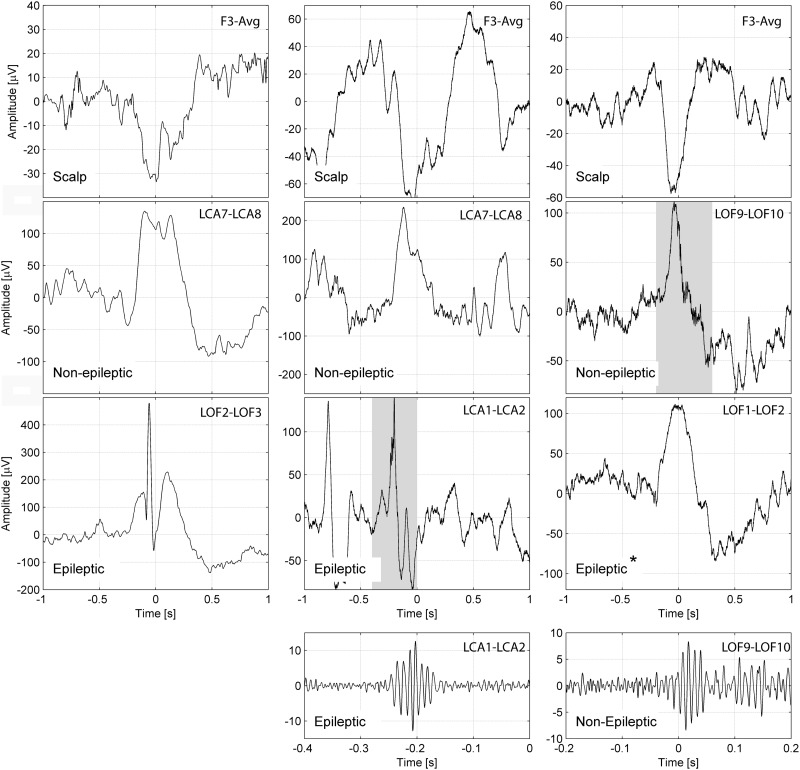Figure 6.
Representative examples for the coupling of epileptic spikes and HFOs across the slow wave cycle. Example of a slow wave and an epileptic spike (left), a slow wave and an HFO in a channel with epileptic activity (middle) and an HFO in a channel with normal EEG activity (right). The top row shows the slow wave in a scalp channel, the second row shows the same time period for an intracerebral channel with normal EEG activity, and the third row an intracerebral channel with epileptic EEG activity. The bottom row shows the HFO signal with a different time and amplitude scale, corresponding to the shaded periods in the intracerebral channels. All the channels are in the left frontal region [anterior cingulate gyrus (LCA1–2), orbitofrontal area (LOF1–2, LOF2–3), second frontal gyrus (LCA7–8), third frontal gyrus (LOF9–10)], each example corresponds to a different patient. The scalp slow wave on the right panel is of shorter duration than the scalp slow waves on the left or middle panel. *In this example a normal sleep slow wave and no epileptic spike is seen in a channel called ‘epileptic’ because it has spikes at other times. Note that the spike and the HFO in the intracerebral channel with epileptic activity (middle) occurs prior to the peak of the scalp negative half-wave, whereas the HFO in the channel with normal EEG activity (right) occurs after the peak of the scalp negative half-wave.

